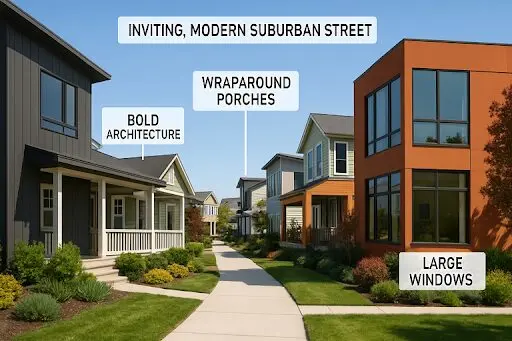The Smart Way to Buy Your Next Car Without Breaking the Bank
Car buying has gotten seriously complicated over the past few years. Between inflated prices, confusing financing terms, and dealerships that seem to have their own mysterious ways of doing business, it’s no wonder so many people end up paying way more than they should for their wheels.
But here’s the thing – there are actually some pretty straightforward strategies that can save thousands of dollars on your next car purchase. The trick is knowing what to look for and (maybe more importantly) what to avoid.
Set Your Budget Before You Fall in Love
This sounds obvious, but most people do it backwards. They find a car they love, then try to figure out how to afford it. That’s exactly how you end up with a payment that eats up half your paycheck.
The smarter approach? Figure out what you can actually afford first. Financial experts usually suggest keeping your total transportation costs – that’s your car payment, insurance, gas, and maintenance – under 20% of your take-home pay. So if you’re bringing home $4,000 a month, you’d want to keep everything under $800.
Now, that might sound pretty restrictive at first. But trust me on this one – having a car payment that doesn’t stress you out every month is worth way more than having the fanciest ride in the parking lot.
The Financing Game Changes Everything
Here’s where things get interesting (and where a lot of people mess up). The financing you get can literally make or break your car buying experience. Dealerships love to focus on monthly payments because it makes expensive cars seem affordable. “Only $399 a month!” they’ll say, conveniently not mentioning that you’ll be paying that for seven years.
This is actually where getting some professional help can make a huge difference. Working with a Car Finance Broker often opens up options that most buyers never even know exist. These professionals have relationships with multiple lenders and can often secure better rates than what you’d get walking into a bank or dealership on your own.
The difference between a 5% interest rate and an 8% interest rate on a $25,000 car loan? That’s about $2,400 over five years. Not exactly pocket change.
Timing Really Does Matter
Car buying has seasons, just like everything else. End of the month, end of the quarter, end of the model year – these are all times when dealers are more motivated to move inventory. It’s not some secret insider knowledge; it’s just basic business.
But here’s what most people don’t think about: your personal timing matters too. If your current car is on its last legs and you absolutely need something this week, you’re not in a great negotiating position. Planning ahead – even just a few months – gives you way more options and bargaining power.
New vs Used Isn’t Always What You Think
The conventional wisdom says used cars are always cheaper, but that’s not necessarily true anymore. Sometimes a new car with manufacturer incentives can actually cost less than a barely-used version of the same model. It’s weird, but it happens.
What really matters is the total cost of ownership. A slightly more expensive car that’s more reliable might save you thousands in repair costs over the years. On the flip side, that “great deal” on a luxury car might come with maintenance costs that’ll make your wallet cry.
Many families find that certified pre-owned vehicles hit the sweet spot – you get most of the reliability of a new car without taking the biggest depreciation hit.
The Trade-In Trap (And How to Avoid It)
Trading in your old car at the dealership is convenient, sure. But convenient rarely means cheap. Dealers need to make money on your trade-in, so they’re probably not going to give you top dollar.
Selling privately takes more effort, but it usually nets you significantly more money. Even if you only get $2,000 more for your old car by selling it yourself, that’s $2,000 less you need to finance on your new one.
If private selling sounds like too much hassle, at least get quotes from a few different places before accepting the dealer’s offer. Sometimes the difference is smaller than you’d expect, and the convenience might be worth it.
The Real Cost of Extended Warranties and Add-Ons
Dealerships make a lot of their profit on the extras they sell you after you’ve agreed on the car price. Extended warranties, paint protection, gap insurance – these can add thousands to your final bill.
Some of these products have value, but most are overpriced at the dealership. Gap insurance, for example, can often be added to your regular car insurance policy for a fraction of what the dealer charges.
The key is not to make these decisions when you’re tired and just want to drive home in your new car. Research these options beforehand, and don’t be afraid to say no to everything.
Making It All Work Together
Smart car buying isn’t about finding one magic trick that saves you tons of money. It’s about making good decisions at each step of the process. If you’re purchasing a vehicle from outside your area, comparing Car Transport Quotes Essex can help you find affordable options for safely delivering your new car to your doorstep.
Budget realistically, shop around for financing, time your purchase strategically, consider all your options for both the new car and your trade-in, and don’t get pressured into expensive add-ons.
The car market can feel overwhelming, especially when you’re dealing with high prices and pushy salespeople. But remember – you’re the one with the money, which means you’re the one with the power. Take your time, do your research, and don’t be afraid to walk away if a deal doesn’t feel right.
Your bank account will thank you later.






